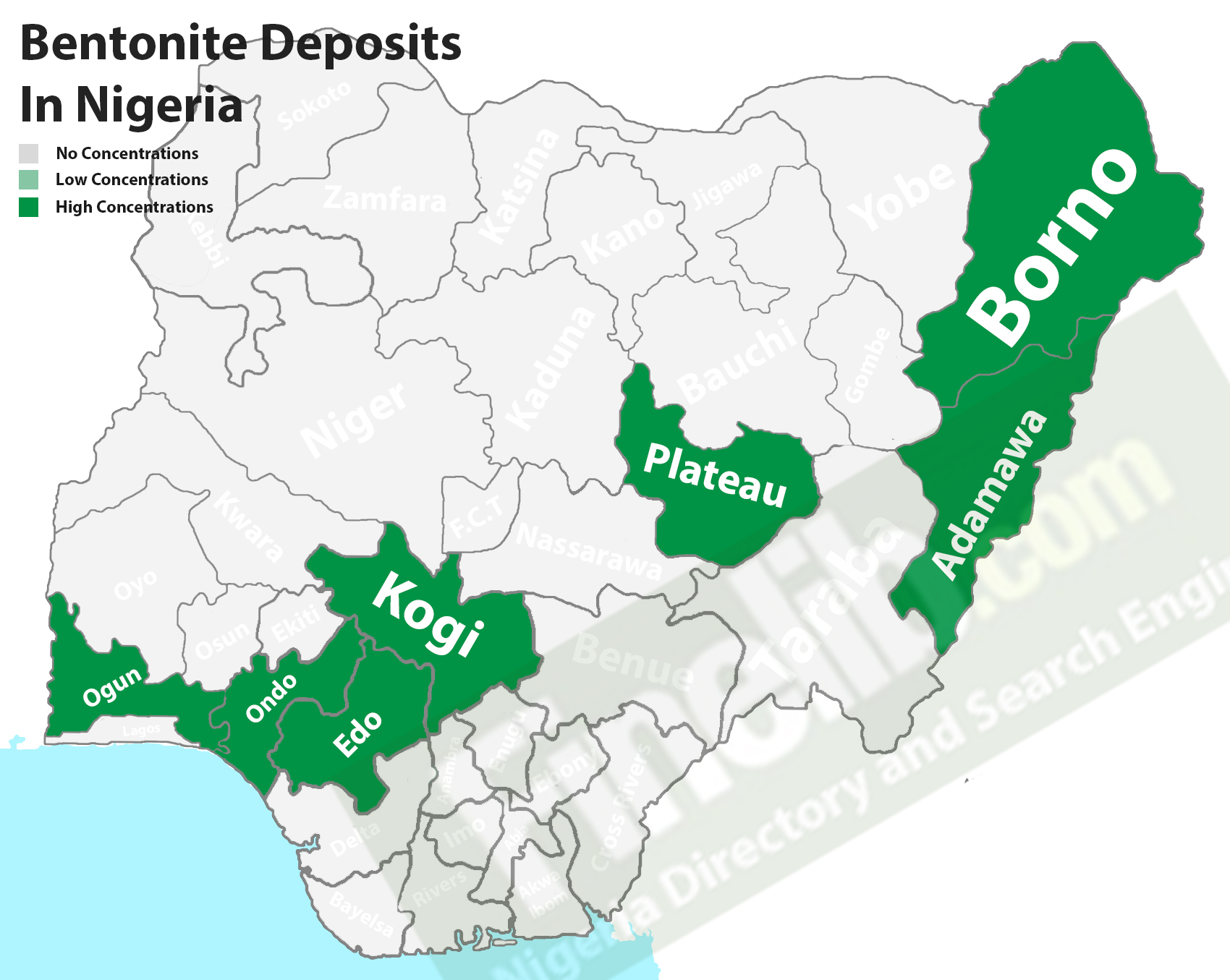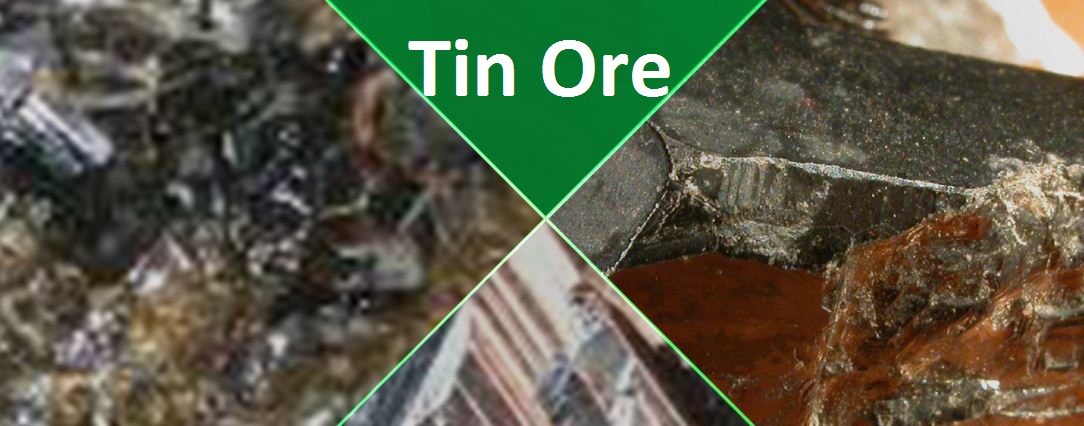Bentonite Mineral Depositions In Nigeria And It Benefits

Â
Bentonite Clay Mining in Nigeria - Just like Nigeria, other Africa countries are also rich in this type of mineral resources.
Â
Bentonite is found in these Nigerian States; Edo, Kogi, Ogun, Ondo, Adamawa, Plateau and Borno states.
Â
Bentonite is popular in the Nigerian, West African market but is commonly-known with the local names such as NZU or NDOM in Efik.
Â
Â

Â
Â
Mining of bentonite in Nigeria
Â
The mining of bentonite in Nigeria started in 1961 at Bende Local government Area of the old Abia state in the eastern region of the country.
Â
As at that period, the production of bentonite clay was 3000 tons per day. This production level rose significantly from 1961 to 1963 to the output of 5106 tons per day.
Â
About Bentonite
Â
Bentonite Clay, also known as aluminium phyllosilicate is absorbent clay richly composed of montmorillonite and beidellite.
Â
It is formed as a result of the decomposition of volcanic ash mainly in the presence of water. It has a boiling point of 2760oC and melting of 1300°C.
Â
Â
Â
Bentonite Mining Machinery
Â
Companies venturing into bentonite mining in Nigeria need the necessary machinery mentioned below.
Â
Scrapper: scrapper is a bentonite mining machine used in scrapping off the topsoil for bentonite to be mined.
Â
Bentonite Crusher Machine: Its application is essential in the bentonite production process for crushing of the mineral.
Â
Types of bentonite
Â
Bentonite is of different types with varying elements such as potassium (K), sodium (Na), and calcium (Ca).
Â
These elements, according to its deposit, gave the different types of Bentonite its names such as Sodium Bentonite, Calcium Bentonite, and Potassium Bentonite.
Â
·        Sodium Bentonite
Â
This is a sound absorbent. It absorbs water very well and expands when it is wet, and because of its colloidal properties, it is suitable for various applications.
Â
·        Calcium Bentonite
Â
This is the major constituents of fuller's earth, and because of its ability to decolorize oil and liquids without chemical treatment, it is regarded as a useful adsorbent of fats and oil as well as ions in solution.
Â
·        Potassium Bentonite or potash bentonite
Â
This is rich in potassium. It has a crystal structure of muscovite and doesn't expand. It is formed from the modification of volcanic ash.
Â
Of all three types, only 2 which is sodium and calcium bentonite are used for industrial purposes.
Â
Â
Â
Compound summary of Sodium bentonite
Â
The compound summary of sodium bentonite is as follows;
Â
PubChem CID:Â Â Â Â Â Â Â Â 72941614
Â
Structure:Â Â Â Â Â Â Â Â Â Â Â Â Â Â Find Similar Structures
Â
Molecular Formula:Â Â Al2H2Na2O13Si4
Â
Synonyms:Â Â Â Â Â Â Â Â Â Â Â Â Â Sodium bentonite Bentonite, sodian 85049-30-5 EINECS 285-199-4 Q27281818
Â
Molecular Weight:Â Â Â Â 422.29 g/mol
Â
Boiling Point:   381.8°C
Â
CAS Number:Â Â 1302-78-9
Â
Â
Â
 The component compounds of bentonite
Â
CID 962 (Water)
Â
CID 190217 (Oxide)
Â
CID 5360545 (Sodium)
Â
CID 4082203 (Silicon(4+))
Â
CID 5359268 (Aluminum)
Â
Â
Â
Uses of Bentonite
Calcium bentonite is a useful adsorbent of ions in solution, fats, and oils.
Â
· Calcium bentonite is the main active ingredient in industrial cleaning agents.
Â
·    Sodium bentonite is mainly used in drilling mud for oil and gas wells, boreholes for geotechnical and environmental investigations due to its excellent colloidal properties.
Â
·    Sodium bentonite is used as a sealant because of its low permeability barrier or groundwater barrier.
Â
·    Sodium bentonite is used to line the base of landfills.
Â
·  Bentonite can be used for external purposes like in skincare treatment, mud pack and also as a clay poultice.
Â
·   Bentonite is used as a binder, purifier, and absorbent.
Â
·   Bentonite is used in making toothpaste.
Â
Â
Â
Is it good to use bentonite on the skin?
Â
Because bentonite clay has an excellent adsorbent power, anybody with oily skin or any skin experiencing acne breakout can use it.
Â
Additionally, if there is any inflammation on the skin, the clay can calm it down. It can also assist in removing oil or sebum from the skin.
Â
With these few listed ideas, it is pronounced that bentonite is not particularly in any way harmful to the skin.
Â
Â
Â
History of bentonite
Â
Bentonite got its name from a place named Fort Benton, Wyoming at upper cretaceous tuff in the year 1890 because it is a place that the deposit occurs in a large amount.
Â
It got the name of its chief mineral 'montmorillonite' from Montmorillon, in Southern France, which was the first place the deposit was discovered.
Â
Â
Â
How is bentonite formed?
Â
Bentonite can be formed by the modification of volcanic glass to clay minerals.
Â
Before this can be done, there must be a blend of water as well as the defeat of silica, alkalies and bases.
Â
Therefore, this clay bentonite can be found at any place that has deep-rooted volcanic eruption. The clay is a result of the volcanic ash.
Â
Â
Â
Which countries export of bentonite?
Â
As of 2018, bentolite ranked the 2271st of the world's most traded product. It also had a total of $827 Million US dollars as at the year 2018 representing 0.0045%.
Â
Export of bentolite
Â
The countries topping the list of bentolite export as of 2018 were as follows;
Â
·        United States ($191M),
Â
·        India ($82.6M),
Â




